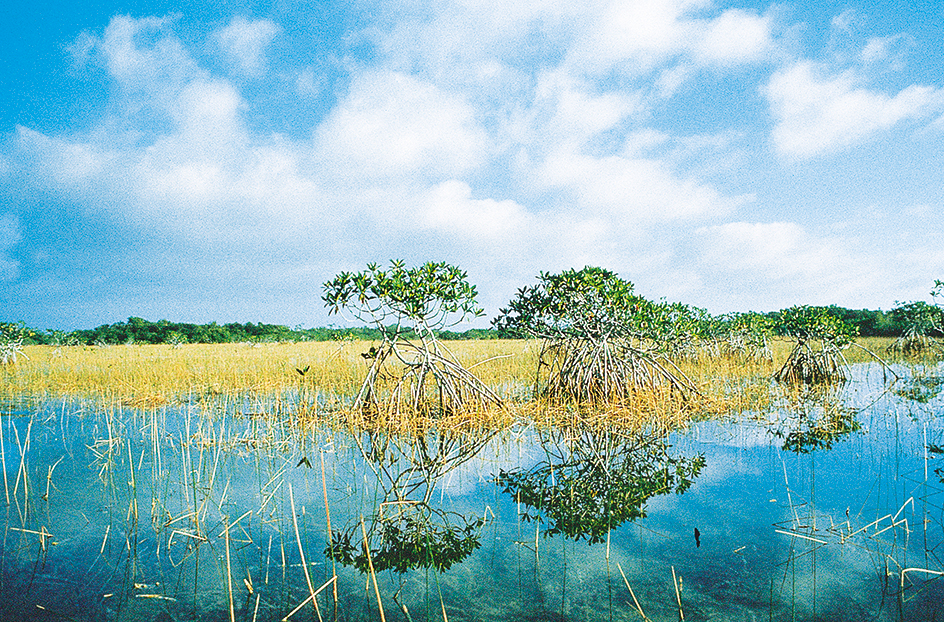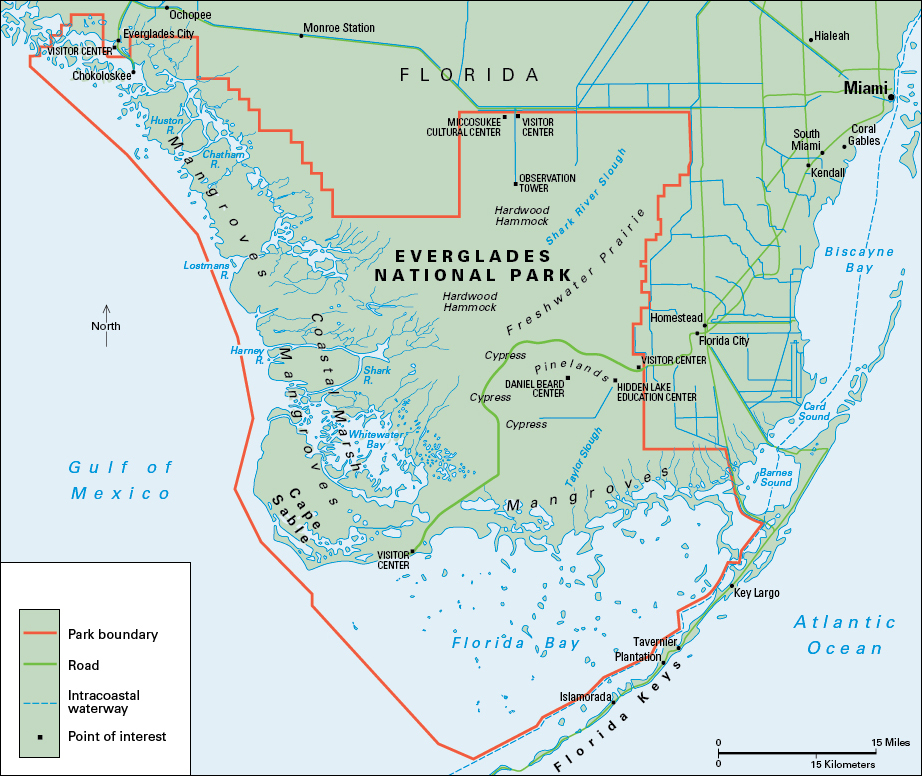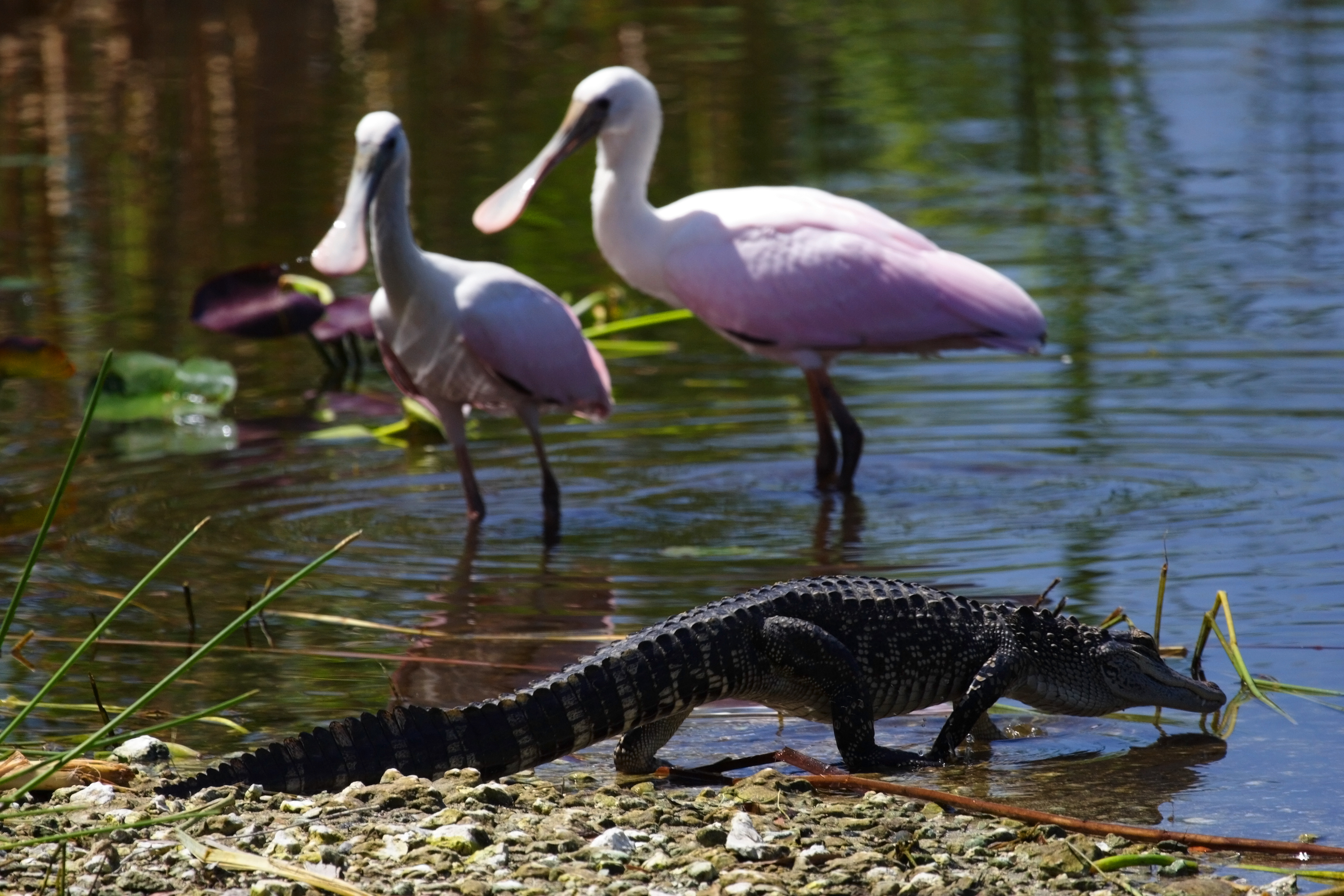Everglades National Park is one of the few subtropical regions in the United States. The park is located on the southwestern tip of the Florida peninsula. It includes the southern part of the so-called Ten Thousand Islands along the Gulf of Mexico and parts of the Everglades and the Big Cypress Swamp. The park is known for its coastal salt marshes and mangrove swamps, where the spreading roots of mangrove trees catch and hold soil.
The Everglades were created after the most recent ice age, which ended about 11,500 years ago. The ice melting from glaciers raised the level of the sea, which flooded the outlets of Everglades streams and turned the area into a wetland. Today, Everglades National Park includes about one-fifth of the original Everglades area. Its junglelike plant life includes sawgrass, delicate orchids, lacy cypress trees, pines, palms, and mangrove trees that form a thick tangle as high as 70 feet (21 meters). Crocodiles, alligators, manatees, and a number of bird, fish, and insect species live there. Visitors to the park may try to catch a glimpse of the rare and elusive Florida panther.
Various peoples have lived in the Everglades through the centuries. Many Seminole fled to the area in the early 1800’s during a period of wars against United States troops. In the early 1900’s, the state of Florida began draining parts of the wetlands to make the land suitable for farming. Lake Okeechobee, at the northern edge of the Everglades, became a source of drinking water to the growing Miami area.
In the 1940’s, the U.S. government decided to try to preserve a section of the Everglades. The southwestern region of the Everglades became the Everglades National Park in 1947. For its area, see National Park System (table: National parks).



